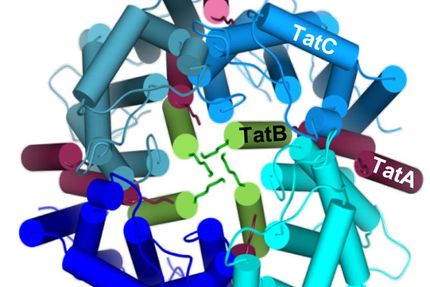UCO researchers patent a bacterial method for the decomposition of cyanide from the jewellery industry
The jewellery industry produces approximately 20 metric tons of cyanide which is used for the recovery of precious metals. This residue is toxic and very difficult to eliminate. Therefore, the Microbial metabolism Group of the Biochemical and molecular biology Department of the Cordoba University (UCO) headed by Professor Francisco Castillo, has designed and patented a biological reactor to eliminate cyanide by using the bacteria Pseudomonas pseudoalcaligenes CECT5344 (deposited under this code in the Spanish Type Culture Collection).
Their work has been labelled as an Excellence Project by the Department for Innovation and it also receives support from Gemasur, a Cordovan company that treats jewellery residue, which has provided the scientists with it.
Cyanide may appear in two different forms depending on the PH of its medium. With alkaline pH the soluble form of cyanide is predominant, whereas if the pH of the medium is neutral or acidic, the gaseous form predominates, that is, hydrogen cyanide (HCN). Therefore, in order to keep the cyanide in dissolution and not release it into the atmosphere as toxic gas it is necessary to maintain the liquid medium with alkaline pH (this is, over pH 9).
“Since the bacteria Pseudomonas pseudoalcaligenes grows in mediums having a pH of over 9 it prevents the cyanide from being released as hydrocyanidic gas, as lethal as cyanide solution, but it is more dangerous due to its ability to spread ”, states Professor Castillo.
Now, the Cordovan research group, in collaboration with the Extremadura University, works on perfecting this bioreactor to achieve “the systematizing of the cyanide decomposition process and to facilitate further industrial uses", says Castillo. The reactor is now operating discontinuously but it is expected to work continuously in the near future. That is, with a constant flow of contaminated medium and under a fixed supply of nutrients, pH, temperature, aeration and bacterial biomass.
Along this line, Professor Roldán has isolated a mutant strain of the abovementioned bacteria that supports cyanide concentrations five times higher than the wild strain, which can fight about 0.2 grams of cyanide per liter of waste.
Most read news
Topics
Organizations
Other news from the department science

Get the life science industry in your inbox
By submitting this form you agree that LUMITOS AG will send you the newsletter(s) selected above by email. Your data will not be passed on to third parties. Your data will be stored and processed in accordance with our data protection regulations. LUMITOS may contact you by email for the purpose of advertising or market and opinion surveys. You can revoke your consent at any time without giving reasons to LUMITOS AG, Ernst-Augustin-Str. 2, 12489 Berlin, Germany or by e-mail at revoke@lumitos.com with effect for the future. In addition, each email contains a link to unsubscribe from the corresponding newsletter.

















































